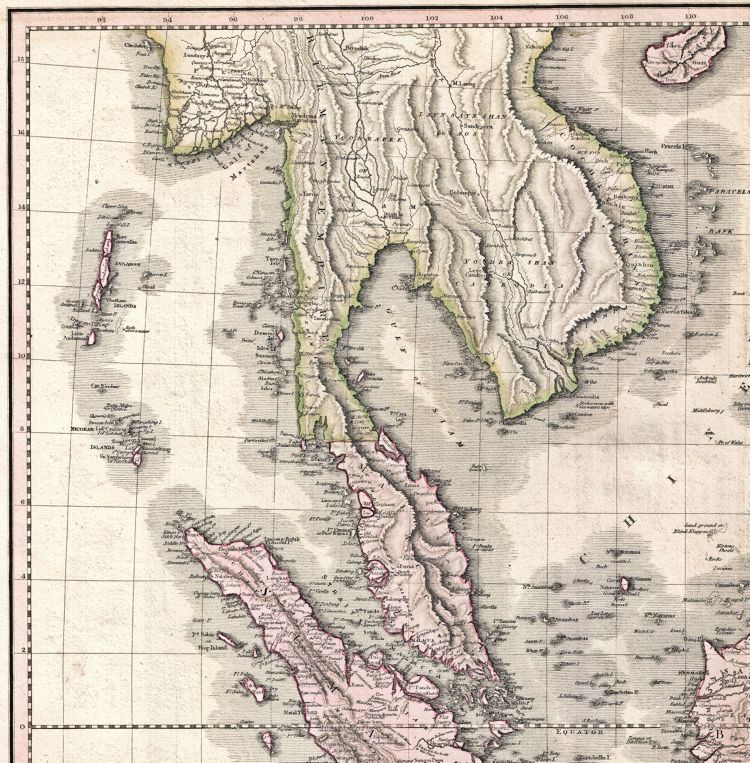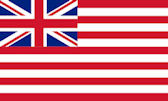

Zitierweise / cite as:
Payer, Alois <1944 - >: Chronik Thailands = กาลานุกรมสยามประเทศไทย. -- Chronik 1818 (Rama II.). -- Fassung vom 2015-05-09. -- URL: http://www.payer.de/thailandchronik/chronik1818.htm
Erstmals publiziert: 2013-06-29
Überarbeitungen: 2015-05-09 [Teilung des Kapitels] ; 2015-05-07 [Ergänzungen] ; 2015-04-21 [Ergänzungen] ; 2015-03-31 [Ergänzungen] ; 2015-03-15 [Ergänzungen] ; 2015-03-03 [Ergänzungen] ; 2015-01-28 [Ergänzungen] ; 2015-01-13 [Ergänzungen] ; 2014-12-21 [Ergänzungen] ; 2014-11-11 [Ergänzungen] ; 2014-10-20 [Ergänzungen] ; 2014-08-27 [Ergänzungen] ; 2014-02-26 [Ergänzungen] ; 2013-12-18 [Ergänzungen] ; 2013-11-25 [Ergänzungen] ; 2013-11-07 [Ergänzungen] ; 2013-10-09 [Ergänzungen] ; 2013-10-03 [Ergänzungen] ; 2013-09-27 [Ergänzungen] ; 2013-09-15 [Ergänzungen] ; 2013-08-26 [Ergänzungen] ; 2013-08-23 [Ergänzungen] ; 2013-08-20 [Ergänzungen] ; 2013-08-17 [Ergänzungen] ; 2013-07-06 [Ergänzungen] ; 2013-06-30 [Ergänzungen]
©opyright: Dieser Text steht der Allgemeinheit zur Verfügung. Eine Verwertung in Publikationen, die über übliche Zitate hinausgeht, bedarf der ausdrücklichen Genehmigung des Herausgebers.
Dieser Text ist Teil der Abteilung
Thailand von
Tüpfli's Global Village Library
ช้างตายทั้งตัวเอาใบบัวปิดไม่มิด
|
Gewidmet meiner lieben Frau Margarete Payer die seit unserem ersten Besuch in Thailand 1974 mit mir die Liebe zu den und die Sorge um die Bewohner Thailands teilt. |
1818


Prinz Mongkut (เจ้าฟ้ามงกุฎ สมมติเทวาวงศ์พงษ์อิศรกษัตริย์, 18104 - 1868) ist sieben Monate lang buddhistischer Novize im Wat Mahathat (วัดมหาธาตุยุวราชรังสฤษฎิ์ราชวรมหาวิหาร).
Abb.: Lage des Wat Mahathat (วัดมหาธาตุยุวราชรังสฤษฎิ์ราชวรมหาวิหาร)
[Bildquelle: OpenStreetMap. -- Creative Commons Lizenz (Namensnennung, share alike)]
1818

Aufgrund von Berichten seiner Tributdelegation über Parkanlagen des Kaisers von China mit Tieren und seltenen Pflanzen lässt Rama II. von Fronarbeitern einen Park mit künstlichen Seen und Inseln sowie Pavillons anlegen.
1818

Schweres Gewitter in Ayutthaya (อยุธยา) beschädigt drei Klöster.
Abb.: Lage von Ayutthaya (อยุธยา)
[Bildquelle: OpenStreetMap. -- Creative Commons Lizenz (Namensnennung, share alike)]
1818

Burma besetzt Phuket (ภูเก็ต) als Vergeltung dafür, dass Malaien von Phuket chinesische und birmanische Boote angegriffen hatten, die essbare Vogelnester (Nester der Salanganen Aerodramus spp.) sammelten.
Abb.: Essbare Vogelnester
[Bildquelle: Rainer Zenz / Wikimedia. -- GNU FDLizenz]
1818


Abb.: Siam (Kartenausschnitt)
[Bildquelle: Pinkerton, J., A Modern Atlas, from the Lates and Best Authorities,
Exhibiting the Various Divisions of the World with its chief Empires, Kingdoms,
and States; in Sixty Maps, carefully reduced from the Larges and Most Authentic
Sources. -- Philadelphia, 1818 / Wikimedia. -- Public domain]
1818

Mit Zustimmmung des Governor General von Bengal der britischen East India Company sendet der britische Governor von Penang eine Freundschaftsadresse nach Siam mit der Bitte, die Handelsbedingungen zu verbessern.
1818

John Crawfurd (1783 – 1868) von der British East India Company kommt an Phuket (ภูเก็ต) vorbei bei einer Fahrt entlang der Tenasserim-Küste nach Penang. Er schreibt darüber:
Abb.: Lage von Junk Ceylon (Ujong Salan) / Phuket] (ภูเก็ต)
[Bildquelle: Scottish Geographical Magazine, 1886. -- Public domain]
"In general the country is a mere wilderness. The best peopled portion of this territory is the island of Salang [Phuket]. The island is under a governor ... subject to his jurisdiction are seven districts on the continent extending all the way to the Burmese frontier. The most considerable place in question is Ponga [พังงา] [Phang Nga - where the Phuket governor was now staying after the Burmese invasions], which contains between three and four thousand inhabitants among whom are said to be from eight hundred to 1,000 Chinese. Tin mines or rather stream works appear to be wrought in the district of Ponga as well as Junkceylon [Phuket]." He had been sailing south down "the mainland coast north of Phuket", which consisted of: "nothing but one universal forest of stately trees. The beach is beautiful white sand ... we afterwards saw one neat village within a mile of the Popra [Pak Pra] [ปากพระ] strait. On the shore we observed a few fishermen drying their nets while their canoes lay on the beach ... we endeavored to make our wish for an intercourse intelligible by signals ... [The men] were most timid seeing our ship ... At length we sent a boat ashore and after considerable hesitation two individuals consented to come on board, but not until one of our men was left behind as a hostage for their safety. This extraordinary timidity arises from the situation in which these poor people are placed. They live on territory disputed between the hostile Bur- mans and Siamese and consequently are in a state of perpetual insecurity and distrust, while they are now rarely visited by European shipping. Our visitors proved to be a Siamese and a Chinese mestizo of Siam ... in complexion and features he was no longer distinguishable as a Chinese and could only be recognized as such by the fashion in which he wore his hair [in a pigtail]. We addressed them in Malay but they understood but a few words and we could carry on no conversation with them ... The coast abounds in fish and for the value of two rupees we obtained a very large supply of an excellent description."
[Zitiert in: Mackay, Colin <1936 - >: A history of Phuket and the surrounding region. -- Bangkok : White Lotus, 2013. -- 438 S. : Ill. ; 25 cm. -- ISBN 978-974-480-195-1. -- S. 255f.]
1818/1819
Großes Wasserbüffel-Sterben.
Abb.: Wasserbüffel, Thailand 1965
[Bildquelle: H. Grobe / Wikimedia. -- Creative Commons Lizenz (Namensnennung)]
1818

Der Schweizer Büchsenmacher Joseph Egg (1775 - 1835) erfindet das Zündhütchen zum Zünden von Munition. Zum Auslösen benötigt man ein Perkussionsschloss, auf dessen hohlen Stift es gesteckt wird.
Abb.: Perkussionsschloss mit Piston
[Bildquelle: Meyers Großes Konversations-Lexikon, 1905]
Abb.: Perkussionsschloss
[Bildquelle: Wilfried Wittowsky / Wikimedia. -- GNU FDLicense]
1818-06-24

Kapitän Stephen Williams (1781 - 1844) kommt mit einem Schiff nach Siam, um Zucker zu kaufen. Es ist das erste bekannte US-Schiff, das nach Siam kommt.
Williams erhält eine Audienz bei Prinz Chetsadabodin (พระเจ้าลูกยาเธอ กรมหมื่นเจษฎาบดินทร์, 1788 - 1851), dem künftigen Rama III.
Dit Bunnag (ดิศ บุนนาค, 1788–1855) gibt Williams einen Brief (in Portugiesisch) an US-Präsident James Monroe (1758 - 1831) mit, in dem er dazu auffordert, dass künftige Handelsschiffe Feuerwaffen bringen.
Bis 1821 kommen 12 US-Schiffe nach Siam, sie genießen bevorzugte Behandlung, da sie Feuerwaffen ins Land bringen. 1821 z.B. bringt ein US-Schiff 5.000 Musketen (Vorderlader)
Abb.: Konstruktionsplan einer US Model 1816 Musket, 1816 - 1844
[Bildquelle: Wikimedia. -- Public domain]
1818-09

Carlos Manuel Silveira wird vom portugiesischen Gouverneur von Macao, Miguel de Arriaga, nach Siam geschickt. Er wird von Rama II. am 1818-09-24 aber nicht als Gesandter empfangen, sondern als gewöhnlicher Händler. Der König fordert von ihm Gewehre und andere Waffen, die die Portugiesen auch liefern. Trotzdem verweigert Siam einen Handelsvertrag mit Portugal. Silveira wird aber als Konsul Portugals anerkannt.
Abb.: Lage von Macao
[Bildquelle: OpenStreetMap. -- Creative Commons Lizenz (Namensnennung, share alike)]
Abb.: Portugiesisches Kolonialreich 1822
[Bildquelle: Wikipedia. -- Public domain]
Abb.: Portugal 1815
[Bildquelle: A literary and historical atlas of Europe. -- London, 1910]
"... the Portuguese, the relations between whom and Siam were renewed in 1817, when the Governor of Macao had a letter forwarded to the King in which he requested for the establishment of the former intercourse. The first attempt of the Portuguese was singularly unhappy inasmuch as the person who was to deliver the letter became so excited by the behaviour of the people that he left Siam without waiting for a reply. The letter was, however, afterwards answered and the Consul Silveira [Carlos Manuel Silveira] took charge of the factory. He received on his mission a stipend of 160 Ticals a month from the Siamese Government and was solely employed in building a ship for a merchant in Macao for which the Siamese Government had also promised him money. He got actually for some time 2, 000 Ticals monthly, a sum which was afterwards reduced to 800 Tcs. and finally given up, when Morgan [John Morgan] advanced him to 5, 000 Dollars for this purpose, a transaction which when it became known was not conducive to the good name of the Portuguese. The treaty made by the Portuguese was never ratified although sent to Goa for that purpose, as clauses had been inserted to which the Portuguese Government objected; but it must not be forgotten that according to old rules both Governments accepted silently such clauses as were agreed upon, and it must be therefore surmised that the clauses of the treaty which were agreed upon were considered binding upon both parties. The Consul received from the Government in accordance with old practice a title Hluang Abhai Banit [
หลวง อภัยวาณิช] (the merchant by grace), which recognized him as in charge of Portuguese interests, and gave him to a certain extent charge of the foreign trade."[Quelel: Frankfurter, Oscar <1852 - 1922>: The unofficial mission of John Morgan, merchant, to Siam in 1821. -- In: Journal of the Siam Society. -- 11,1 (1914/15). -- S. 5f.]
ausführlich: http://www.payer.de/thailandchronik/ressourcen.htm